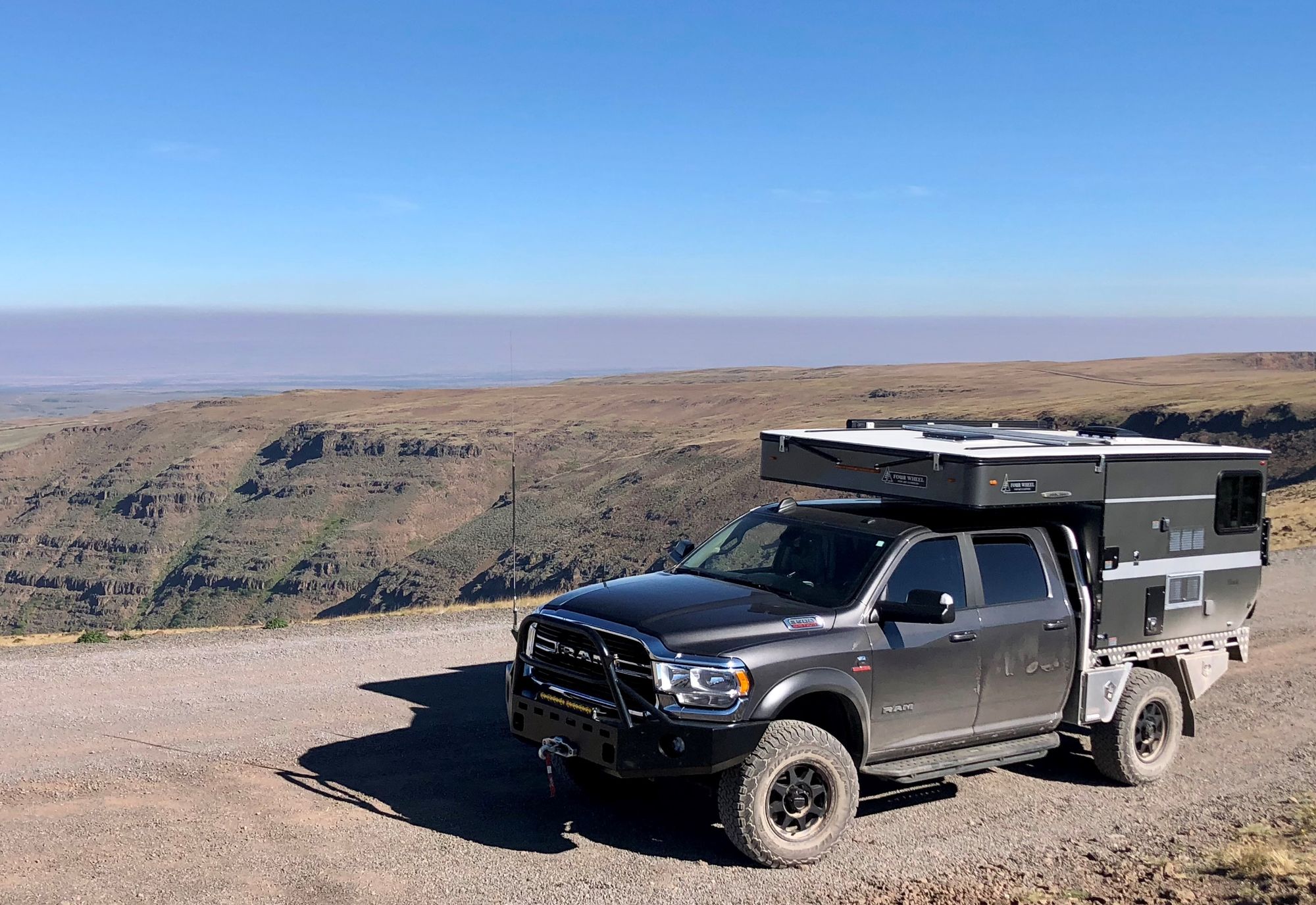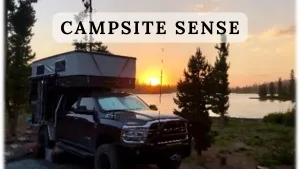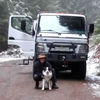Our return trip home from Southern California started in darkness. We wanted to outrun the traffic of Los Angeles and the atmospheric river of rain that was threatening to slow us down. We misjudged on one account which made me think of Jerry Jeff Walker’s ‘LA Freeway’ song. We just wanted to get out alive! A river of cars was already flowing at 5 am but we prevailed. By early afternoon we landed at El Capitan State Beach - one of few campgrounds that had not closed due to flooding. We were looking forward to stretching our legs, having an early happy hour and getting in a short nap – and not necessarily in that order! While driving the obligatory campground loop, my wife and I quickly found a site that tugged at the steering wheel. It appeared to check a lot of our boxes. In 20 quick minutes, our rig was leveled, our top popped (on the camper and beers), chairs were put out and firewood stacked. We paused and took a deep breath of the fresh ocean air and felt all was good. Then, the motorhome couple next to us kicked on their generator, sounding like a battered Model A Ford running on three cylinders. Our shoulders sagged. We were tired and neglected one of our basic criteria for campsite selection. And, the story does not stop here. Hence, the genesis of this article.
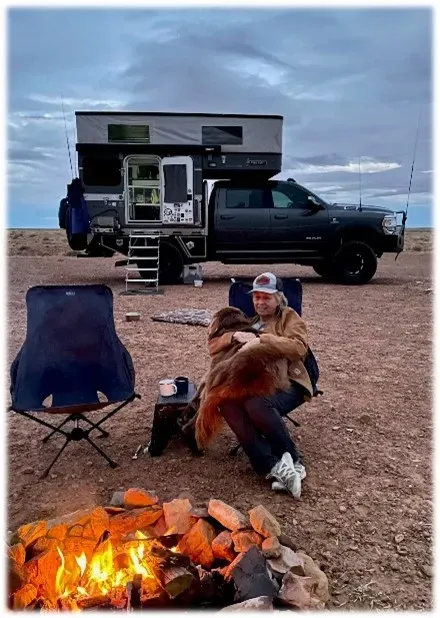
Gretchen and I have been camping all our lives. We started backpacking a half-century ago while in high school. It took a lot of miles and worn-out sleeping bags and shoes before we finally graduated to a tent trailer. We called it our Taj Mohaul. I can still remember reveling over the simple act of wearing jeans while standing up! After a few years, we upgraded to a pop-up camper on a Toyota Tacoma, a lighter FourWheelCamper Fleet, and finally our current rig – a RAM 3500 and FWC Flatbed Hawk. Like a bold red wine paired with pasta and a rich Bolognese sauce, it has been a perfect marriage. In just three years we, have accumulated 70K camping miles and feel like we are still savoring the appetizer!
Our ‘go to’ campsites are typically found off the beaten path by a gurgling creek or tucked between the canopies of several ponderosa trees. Some call it off-grid camping and others boondocking. We just call them honey-holes and we have certainly found a few sweet ones over the years. There is a lot of satisfaction in taking a non-descript dirt road off the highway, winding through and up a canyon for a few miles only to discover the perfect spot overlooking a picturesque valley. Solitude and a sunset is hard to beat. This is why we have an overlanding rig – to get to places that most campers cannot.
However, there are trips, like our recent visit to SoCal, where we have the pedal down for a thousand miles, just trying to get from point A to point B. As a reader of this article, I am sure you know exactly what I am referring to. With little to no BLM land in between, we are sometimes relegated to stay at a lesser-known state park where reservations are not required. It is in these situations where we must tune in our campsite senses to ensure a pleasant overnight stay. Following are a few observations and tips we have learned along the way.
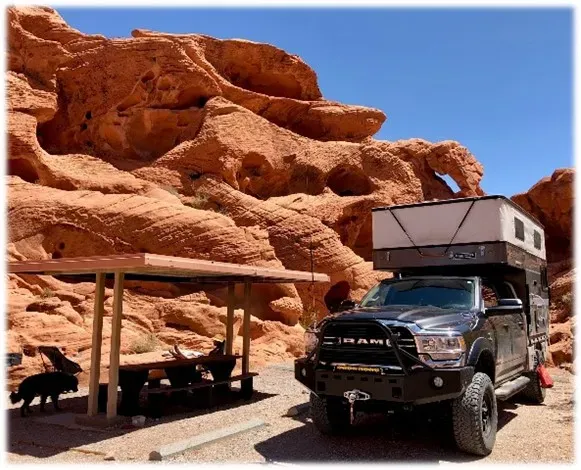
Sun and Shade:
A shade tree can be a luxury during a hot summer sun. The inside of your rig will stay cooler and your refrigerator will draw less power. But in the winter, shade can be a drawback when you want the sun to radiate warmth. Few things are better than an unusually warm winter or spring evening that prolongs a good campfire. Know your compass heading or the trajectory of the sun. Do you prefer morning or evening sun or shade? Are you dependent on solar power? Do you want to heat a bladder of water for cleaning or a shower? These are just a few good considerations
Last year, we were exploring north-eastern Utah and stayed at a campground to freshen up. This one even had free hot showers! We initially selected a campsite with plenty of sunshine but a limited view. So when the view site next to us opened up, we quickly moved. Our camper just cleared the branches of the tree where we chose to park. An hour later, while trying to sneak in an afternoon nap, we heard what sounded like fingernails being dragged across a whiteboard. It was the branches running along our camper top whenever the wind picked up. We just had to laugh... and then moved back to our original choice. Peaceful sleep trumped a view.
Wind:
Wind can be a real nemesis. Besides having to chase down tablecloths or napkins, it can create a lot of dust and contribute to a restless night if it is strong enough to buffet your camper. Pay attention to the prevailing wind direction and orient your camper door on the leeward side. You and your rig will benefit greatly from this simple adjustment. Several years ago, while camping along the Grand Staircase route near Escalante Utah, we had to reposition our camper just to drop the top. The wind kept ‘inflating’ the inside of our FourWheelCamper!
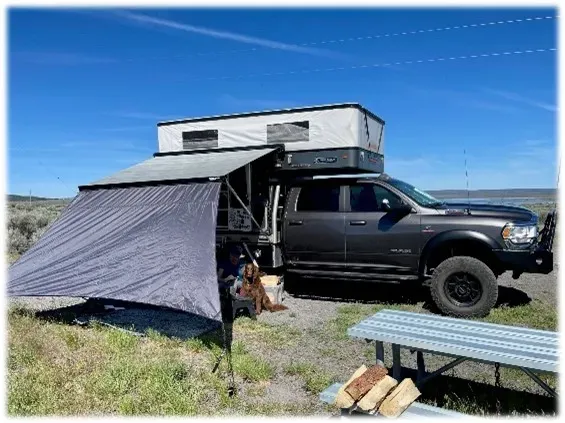
Wind can also make a quick wreck of awnings. We use a Dragon Fly Awning Screen to aid stability in windy conditions. It not only helps anchor the awning but provides a private space and keeps a lot of dust out of the rig. Another option is to hang black, foldable, water bottles from the awning corners. They help reduce awning flaps with moderate wind gusts while solar-heating water for an evening clean-up.
For my wife and I, the only benefit of wind, or better a slight breeze, is that it can keep the mosquitos at bay – especially if you are camping during the transition months between spring and summer. On the other hand, a campfire and/or whiskey and a good cigar can be just as effective with the buzzing bloodsuckers!
Water, Restrooms and Wind Direction:
Are you running low on water? Are you tired of finding a suitable place to empty your portable toilet? You may want to consider selecting a campsite near these facilities. It is not uncommon for us to visit a campground once a week while boondocking just to clean up, refresh our Porta-Potty and refill it with potable water. Be mindful of wind direction if a campground has pit toilets, especially the older configuration which do not vent well. A blast from the past can quickly ruin a nice dinner! In addition, make sure the water is labeled ‘potable’ so you know it is safe to drink.
Generators:
This is a tough one. The constant drone of a nearby generator can quickly change the ambiance of a nice campsite. If you must camp near a generator-equipped RV it may be helpful to know the operating hours within the park. For example, many campgrounds only allow operation between 8-10 am and 6-8 pm. This may not be a problem if you are getting an early start on the road or are away from your site during those hours.
We get the need for generators. Not everyone who enjoys camping can do without AC power – although the advantages are blurring with the advent of solar generators like the 2000-watt Jackery or the 3000-watt Goal Zero products. Solar power systems coupled with lithium-ion batteries are rapidly approaching a performance/cost ratio that will make this silent form of power more attainable. But, until parity is reached, watt per dollar, gas generators are cheaper than solar and will continue to be a mainstay power source in RVs that demand heavy loads from microwaves, air-conditioners and appliances. That said, one of the great RV manufacturing mysteries (for me) is how they can produce a trailer or motorhome that costs $100K but cannot equip it with a quiet Inverter Class Generator made popular by Honda and Yamaha. These produce as little as 50db which is about the level of a normal conversation.
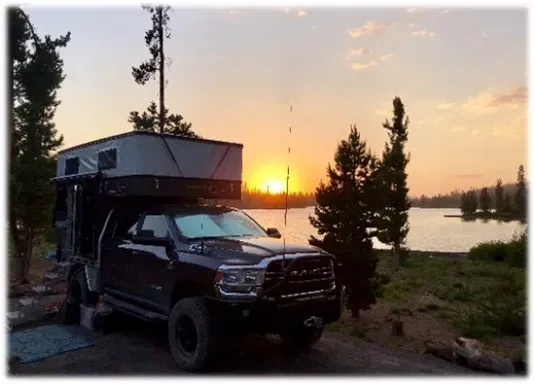
Deadhorse Lake, in the Oregon Fremont Mountains, is one of those smaller campgrounds that checks all of our boxes. The campground is remote, wild and peaceful. And, it is FCFS – no reservations taken! The 5 mile road into the campground is rough enough to keep out large trailers and motorhomes. Each large and generously spaced site has a view of the lake and the sunsets are spectacular. Most are fairly level and can accommodate more than one rig. The restrooms and fire rings are well maintained. Fishing, kayaking, hiking and wildlife viewing are popular activities. Just bring some bug repellant in the early summer months.
Bottles and Boom Boxes:
If you like a quiet setting, keep your eyes out for bottles and boom boxes when driving through a campground. Full or empty booze bottles, sitting or lying on a table may be sign of party ready to happen or one that is taking a break. A boom box is another indicator. Not that we don’t enjoy music. Tequila Sunrise (Eagles) or Up Around the Bend (CCR) could fit the moment well but we are never so lucky. Maybe our age is just catching up with us.
Views and Leveling:
We have a good friend that we call our ‘View Guru’. Waking up to a sunrise or preparing a river-side meal is a top priority for her. She will take a view site over shade or a little generator noise anytime. This can sometimes take a little finesse maneuvering your rig within the confines of a typical campsite. We have another friend with a larger rig that likes level campsites. We camped with Milo and his wife in Baja Mexico. He must have spent 45 minutes trying to get his trailer perfectly level. We were well into our margaritas by the time he finished. The process was then repeated when he discovered the leveling pads were on soft ground!
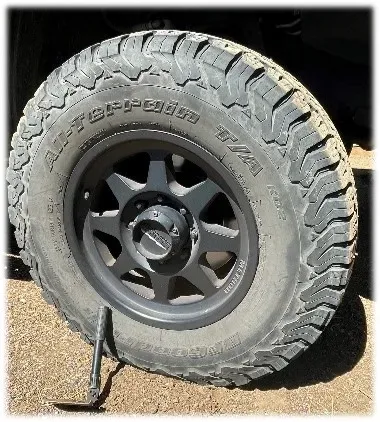
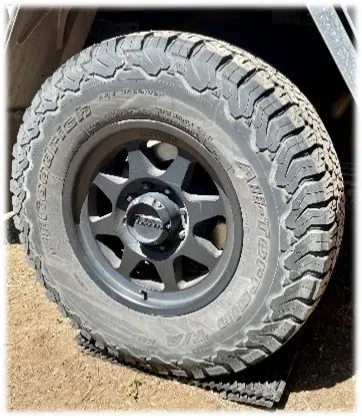
For Gretchen and myself, leveling our rig is a good example of the 80/20 rule. Achieve 80 percent of success while spending 20 percent of the time or effort. We often use the phrase ‘Good enough for government work.’ There are two methods we use for leveling. First, we deploy ‘GoTreads’ to rectify an awkward tilt to our camper. Besides being compact and excellent vehicle extraction boards, GoTreads have 4 leveling heights inherent in their folding design. (It is always a bonus when one piece of gear can serve two functions.) Second, we use a folding shovel to dig or scrap a trough to lower a tire or two. This process can be used by itself or to augment the use of GoTreads in a very uneven campsite.
Last but Not Least:
When picking a campsite, we feel it is better to select your neighbors rather then they select you. For example, we like camping next to Adventure Motorcyclists. They are very appreciative of a cold beer or dinner or campfire and always have a few good stories to tell. And, after a long day of riding, they are typically early to bed and rise which matches our rhythm. We also enjoy camping next to older couples – especially if they have a lot of stickers on their rigs depicting the states they have visited! More often than not, they are insightful and can give us a view into our future. One elderly woman happily baked us an apple pie while telling us about her favorite National Parks. We are never too old to learn something from others.
We hope these tips and musing have been helpful if not a little entertaining. They were culled from experience and plenty of mistakes. Just last week we were camping along the Metolius River not far away from our Oregon home. We selected a remote site and thought we found a new Honey Hole – until we looked up. Leaning over our camper, on a 45 degree angle, was a 100’ ponderosa tree that had seen better years. Although the probability of it falling on us was little to none, we were still a tad skeptical. Best to look up and around before selecting a campsite. You may be surprised about what you can surmise.
Gary and Gretchen Matos
